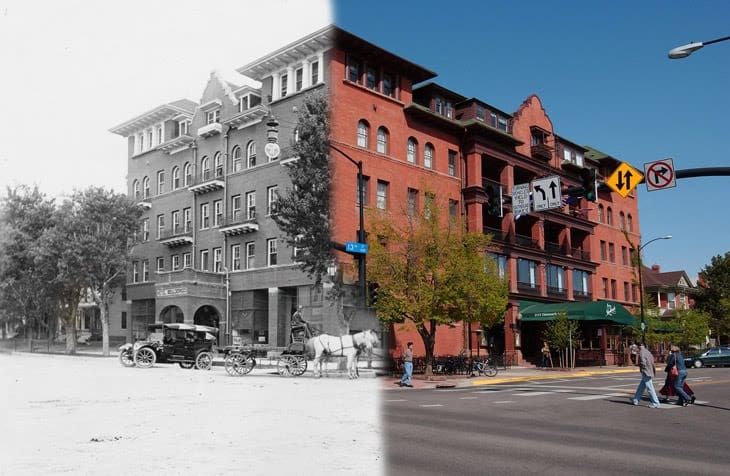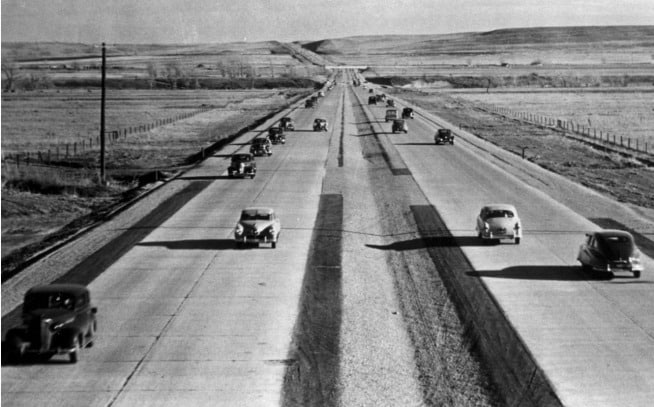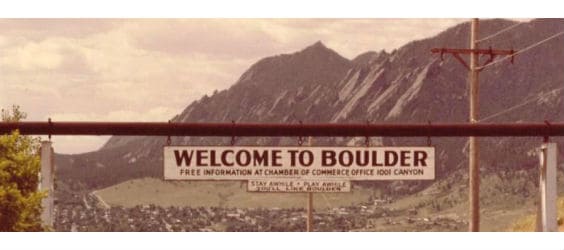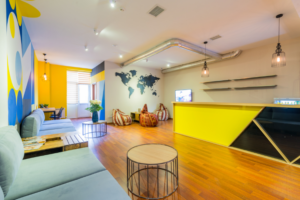Welcome back to the second installment of the “Rise of the Republic” series here at Your Boulder. If you aren’t familiar with what’s going on, I’m taking us all through the history of Boulder from its inception to today in three posts. To find out what happened before the turn of the 20th century, read the first post. Reader beware, you will probably feel a lot worse about the price you paid for your Boulder home after you find out the prices when the town first started (and, yes, I adjusted for inflation).
Now on to the second part of Boulder’s history, which covers 1900 to 1970.
1900-1970: In Which We Pave Roads and Build Landmarks
As promised in the previous post, I will begin with the posted speed limit in Boulder proper. In 1904, a city ordinance made it “unlawful for any person to ride or drive within Boulder at a rate of speed in excess of 6 miles per hour.” To give you an idea of what that speed looks like, the average person finishes a 10K (6.2 miles) race like the Bolder Boulder in about an hour. Basically anyone who is faster than the average runner would be breaking the posted 1904 speed limit.
Of course, the speed limit was created to prevent cars from overtaking other methods of transportation at the time. The first car was spotted in Boulder in 1900, but by 1906, there were 26 registered “mankillers” cruising the streets.
Streets that were unpaved by the way. Up until 1917, Boulder did not have any paved streets, but once cars became more popular, the town began the process of paving streets, starting at the corner of 18th and Pearl, which was still then, even as it is now, at the heart of the town.
But before there were even paved streets, another Boulder landmark was erected downtown: the Boulderado Hotel opened for business on New Year’s Day of 1909.

In 1910, census data reported the population of Boulder, Colorado as 9,539 people.
In 1923, another landmark, Macky Auditorium was built. Over the years, this venue has been host to a wide variety of renowned speakers including Eleanor Roosevelt, the Dalai Lama, Yo-Yo Ma, Jane Goodall, Robin Williams, Conan O’Brien, Bill Maher, Eddie Izzard, Alley II, Neil deGrasse Tyson, Sam Harris, Pilobolus, and Bill Nye.
Another Boulder staple, the Boulder Theater, came into existence in 1936 when the Curran Opera House was renovated and converted into a theater more suitable for film screenings. A number of art deco-style changes were also made including the addition of colorful murals and exterior decoration. The Boulder Theater was designated a landmark in 1980 and it is still the one of the top venues in the city to date.
During the World War II era, things got a little quiet for Boulder, but change, as always, was on the horizon.
In 1952, Boulder’s population hit 20,000 and the Denver-Boulder turnpike, now known to many of us as U.S. 36 or a rush hour parking lot, was opened to traffic. The highway was the first of its kind in Colorado. It cost 25 cents for a trip from Denver to Boulder and provided a pleasant drive through rolling green farmland (it’s hard to even imagine that stretch of land being anything close to farmland these days).

Boulder’s population began to explode around this time and traffic volume so far exceeded expectations that the turnpike fees paid off the $6.3 million in bonds in 15 years. As a result the toll road became a free public road in 1967, becoming the first in the country to do so. And now the highway has added a new toll lane. The city has come full circle.
In 1958, Boulder held the first year of the Shakespeare Festival, a tradition now nearing its sixtieth year and yet another notable cultural feather in Boulder’s cap.
Now we’re nearing the end of Boulder’s “middle ages,” but before I end this, I have to list one last achievement in the city’s history. In 1963, Boulder ushered in a new era by opening Crossroads Mall (some of you newer folks know it as the 29th Street Mall). I’m not ashamed to admit that many of my high school afternoons were spent hanging out at the food court of Crossroads Mall.
Of course, by that time, it had been open for over 30 years and the “mall culture” that pervaded in the 80s and early 90s was coming to an end, but nevertheless, little emo Kelly spent her afternoons in Spencer’s Gifts planning what black light posters I would get when I final graduated from high school and had “my own place.”
Next time, on Rise of the Republic, we get to the meteoric stuff. From the 1970s on, Boulder has been an unstoppable, growing force in Colorado and the country.





